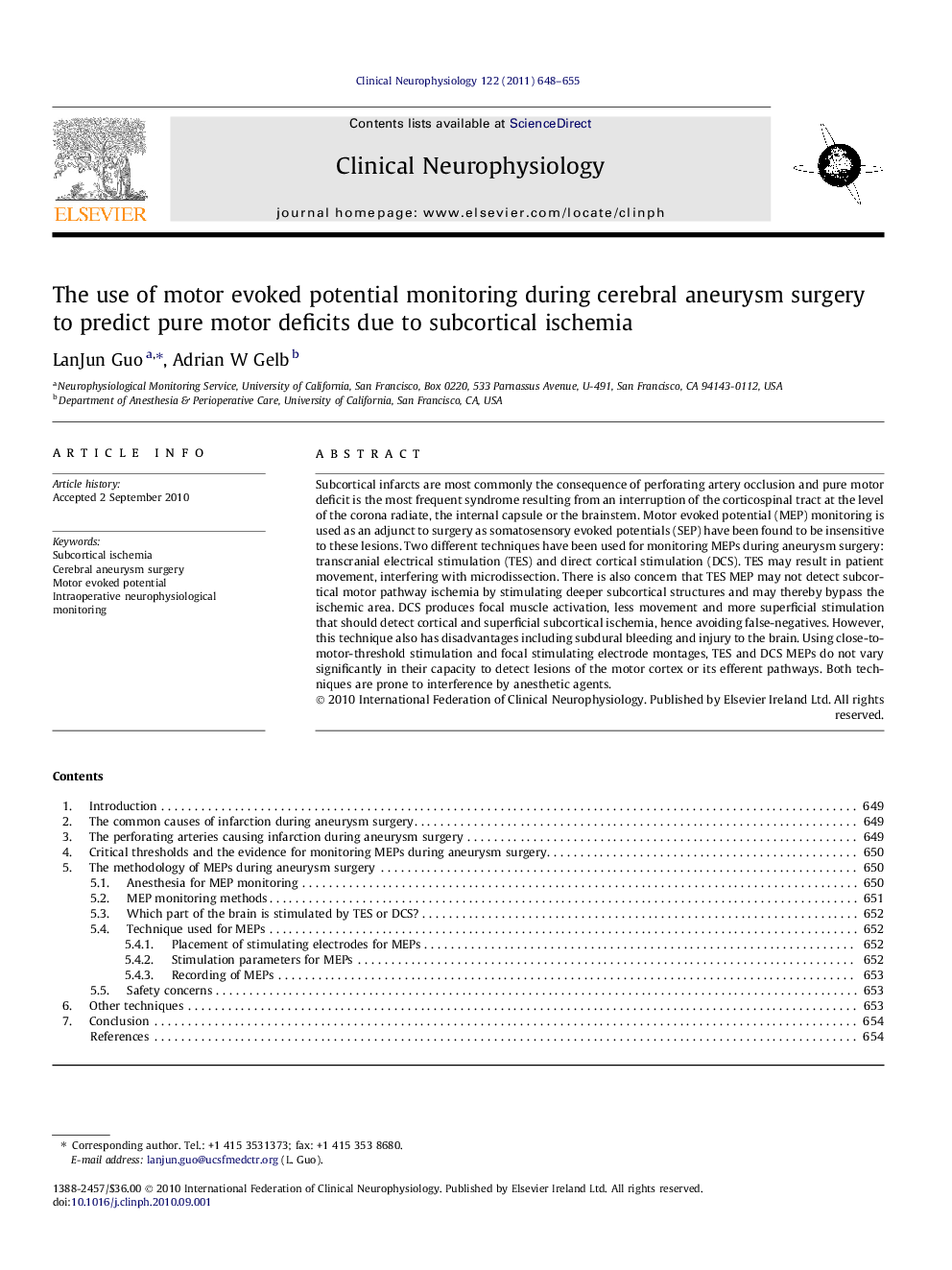| Article ID | Journal | Published Year | Pages | File Type |
|---|---|---|---|---|
| 6009077 | Clinical Neurophysiology | 2011 | 8 Pages |
Abstract
Subcortical infarcts are most commonly the consequence of perforating artery occlusion and pure motor deficit is the most frequent syndrome resulting from an interruption of the corticospinal tract at the level of the corona radiate, the internal capsule or the brainstem. Motor evoked potential (MEP) monitoring is used as an adjunct to surgery as somatosensory evoked potentials (SEP) have been found to be insensitive to these lesions. Two different techniques have been used for monitoring MEPs during aneurysm surgery: transcranial electrical stimulation (TES) and direct cortical stimulation (DCS). TES may result in patient movement, interfering with microdissection. There is also concern that TES MEP may not detect subcortical motor pathway ischemia by stimulating deeper subcortical structures and may thereby bypass the ischemic area. DCS produces focal muscle activation, less movement and more superficial stimulation that should detect cortical and superficial subcortical ischemia, hence avoiding false-negatives. However, this technique also has disadvantages including subdural bleeding and injury to the brain. Using close-to-motor-threshold stimulation and focal stimulating electrode montages, TES and DCS MEPs do not vary significantly in their capacity to detect lesions of the motor cortex or its efferent pathways. Both techniques are prone to interference by anesthetic agents.
Related Topics
Life Sciences
Neuroscience
Neurology
Authors
LanJun Guo, Adrian W Gelb,
